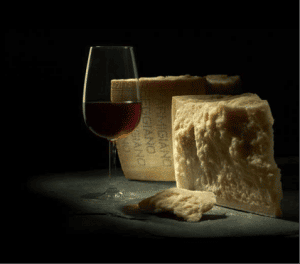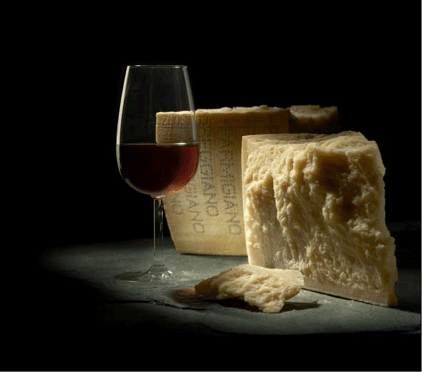
While travelling across the seven continents I interacted with hundreds of epicureans who would enjoy some cheese with their wine and some who preferred the opposite, but just a handful agreed with me when I said that “pairing wine and cheese isn’t as easy as you think”. After all, how hard can it be to put together two things which taste great on their own, right? Well, Not exactly.
Should always compliment each other
Even though each one of us has a different palate and taste for all things good (wine and cheese), I have put together a basic wine and cheese guide which will help you choose the next time you are sipping on some ‘somras’ to discover your favourite combination.
Just like wine varies in body, structure, acidity, sweetness, so does cheese, which varies in fat content, moisture, texture and flavour. To give you another example wines can be classified as those which are young and ready to be drunk while they are fresh with lively citrus, floral, herbs and other fresh aromas. And then there are those wines which have stood the test of time either in an oak cask or through bottle ageing and develop further and lend flavours and aromas of oak, vanilla, sweet spices, leather, tobacco, etc. to the wine. The cheese world is not very different, as some cheeses which have the potential to age lose their moisture content over time thus concentrating the fat and proteins which makes the cheese more flavourful and rich. That should give you a clue to our first pro tip, “match the flavour intensity” in light of age.
Having said that there are many other factors which need to be evaluated before you recommend a wine and cheese pairing for your guests (like a pro!). Let’s make it easy by dividing the cheese into the following categories: Hard and aged, Semi hard and medium aged and soft and fresh.
Hard & Aged Cheese:
Remember the last time your server recommended a nice juicy steak with a 
A Vintage Champagne or a Blanc de Blanc shall make up for an excellent aperitif to get things started. If you are serving these cheeses post dinner reach out for the likes of Sauternes, Oloroso Sherry or a Port.
Semi Hard Cheese:
This category of cheese includes Edam, Emmenthal, Gruyere, Cheddar (young) and Monterey Jack, to name a few. These cheeses still have a firm texture and medium strong flavours. White wine lovers can sip on an off dry Riesling, Gewürztraminer, un oaked chardonnays and Viognier with these cheeses. For lovers of bubbly a Prosecco shall do the trick if you don’t want to splurge on Champagne. Fruity red wines with medium body and well integrated tannins are a perfect match with this category. Merlots, Pinot Noir, Reds from Burgundy or in some cases a good Beaujolais make up for a worthy accompaniment with these cheeses.
Before we go on to our next style of cheese it’s time for pro tip no. 2 “Compliment or Contrast”
When pairing wine and cheese think about the texture of cheese and the wine you are pairing it with. You can either choose a wine which compliments the cheese texture (Soft Brie with a buttery oaked chardonnay) or it can be a contrast (Camembert and Champagne, a classic!)

Soft & Fresh:
These are young cheeses that prefer similar wines which are crisp, acidic and fresh with flavours of citrus, tropical and stone fruit. Avoid going for high tannin reds with this genre (unless you like the taste of chalk).
Some typical examples of this variety include Feta, Brie, Camembert, Mozarella and Ricotta. For white wine lovers there is a whole range of wines that can be paired with these cheeses such as Riesling, Moscato, Pinot Grigio, Sauvignon Blanc, Gruner Veltliner or even a dry rose to name a few. If you are a fan of reds like me cin-cin to a glass of Beaujolais or a Frizzante Lambrusco. You can never keep a bubbly out of action, whereas Champagne is a no brainer you can also toast to a Cava with some of those mentioned above.
While the above mentioned are some basic principles to help you get started, just remember “never be ruled out by rules” (pro tip no. 3) and the only way to increase your WQ (Wine Quotient) is to continue trying different wines.
Also find below a cheat sheet for easy wine and cheese pairing
Tulleeho!
Cheat Sheet
| Cheddar, aged gouda, aged gruyere, Pecorino or Parmigiano Reggiano | Californian Cabernets, Italian Barolos and Barbaresco, Malbec, Californian oaked chardonnay, Chablis, a high quality Viognier |
| Edam, Emmenthal, Gruyere, Cheddar(young) and Monterey Jack | Off dry Riesling, Gewürztraminer, un oaked chardonnays, Viognier, Prosecco, Champagne, Merlot, Pinot Noir, Beaujolais |
| Feta, Brie, Camembert, Mozarella and Ricotta | Riesling, Moscato, Pinot Grigio, Sauvignon Blanc, Gruner Veltliner, a dry rose, Beaujolais, Lambrusco, Cava, Champagne |


